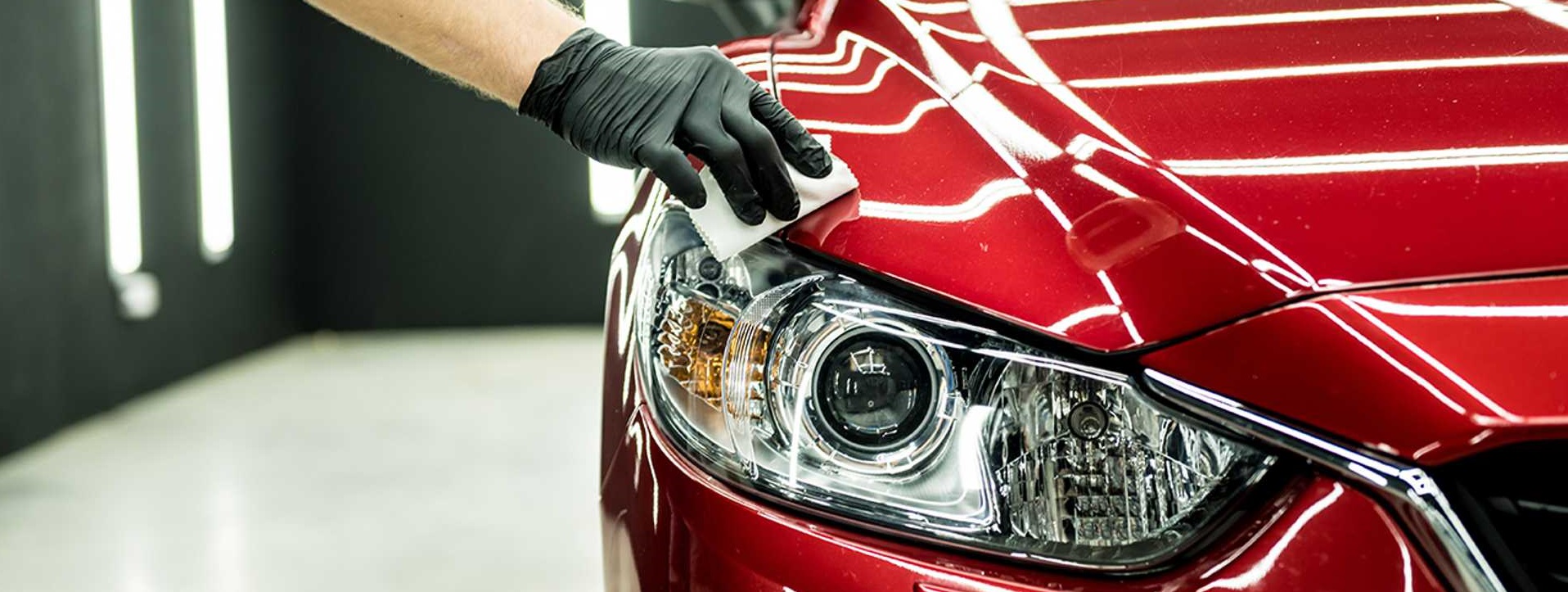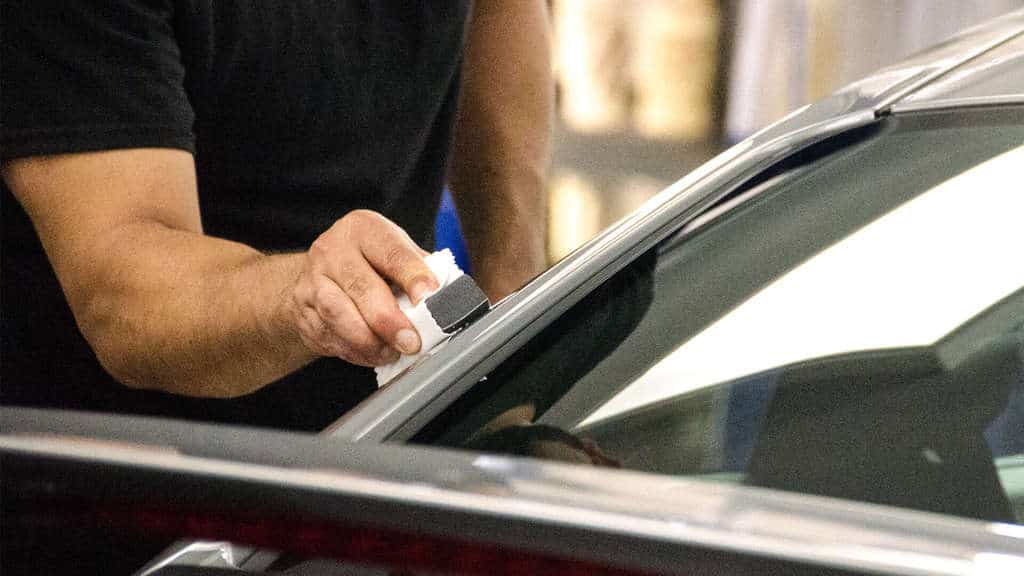Ceramic Coating: The Future of Automotive Surface Protection
Ceramic Layer vs. Conventional Wax: Which Provides Better Long-Term Protection?
The debate in between ceramic finishes and conventional wax for automobile defense has amassed substantial focus amongst auto enthusiasts and specialists alike. While both satisfy of protecting paint, their distinctions in toughness, application, and long-lasting upkeep prices may influence a customer's option. Ceramic finishings flaunt exceptional long life and resistance to ecological factors, yet the intricacy of their application raises inquiries regarding access and functionality. As we check out these contrasting options, it comes to be vital to consider not just the immediate benefits yet also the ramifications for car treatment in time.
Introduction of Ceramic Finishing
Ceramic finishing has gotten considerable popularity amongst automobile fanatics and detailers alike due to its advanced safety top qualities. This cutting-edge technology is designed to create a resilient, hydrophobic guard over a car's paint surface area, considerably boosting its resistance to environmental impurities such as dust, UV rays, and chemical spots. Unlike conventional wax, which offers a short-lived layer of protection, ceramic coverings bond at a molecular level with the paint, using resilient resilience-- usually expanding beyond 2 years with proper upkeep.
The application procedure includes meticulous preparation of the vehicle's surface area, consisting of cleansing and polishing to make certain ideal attachment. As soon as applied, the coating treatments to form a robust layer that not only adds deepness and gloss to the paint but additionally streamlines upkeep. With its hydrophobic homes, ceramic covering allows water and dirt to glide off more quickly, decreasing the regularity of laundries and minimizing the risk of swirl marks.
In addition, ceramic coatings are readily available in various solutions, permitting users to pick products tailored to their certain requirements and preferences. In general, ceramic finishing stands for a substantial advancement in paint defense technology, delivering premium efficiency compared to conventional choices.
Introduction of Standard Wax
Typically considered as a staple in automotive care, wax acts as a popular choice for those looking for a simple method to enhance and protect their lorry's paint - ceramic coating. Automotive wax typically consists of all-natural components, such as carnauba, or artificial substances, designed to produce a protective layer externally of the paint. This layer not only improves the car's gloss and shine but additionally supplies a barrier versus environmental pollutants
The application of wax is typically easy to use, making it available for both professionals and DIY enthusiasts. It can be applied by hand or machine, permitting versatility in the describing process. Once used, wax needs a treating duration, after which it solidifies to develop a protective shell. Wax is also understood for its ability to drive away water, promoting a beading impact that aids in the avoidance of water spots and rust.
Nonetheless, while wax is effective for improving the visual appeal of an automobile, it is important to note that the defense it supplies may require a lot more constant reapplication contrasted to alternative products, such as ceramic coatings. In general, traditional wax continues to be a preferred over here alternative for those prioritizing convenience of usage and immediate aesthetic improvement.
Durability and Durability Comparison
While both ceramic coverings and standard wax deal protective benefits for auto paint, their durability and longevity vary substantially. Traditional wax, normally made from all-natural carnauba or synthetic polymers, generally supplies a safety layer that lasts around three to 6 months. This reasonably brief life-span necessitates routine reapplication to keep optimum security.
In comparison, ceramic coatings are engineered from advanced nanotechnology, forming a covalent bond with the paint surface area. This results in a robust, hydrophobic layer that can sustain for 2 to five years, relying on the product and environmental problems. The premium toughness of ceramic coverings is credited to their chemical framework, which supplies enhanced resistance to scrapes, UV rays, and oxidation.

Defense Against Ecological Factors
Securing a vehicle's paint look what i found from environmental variables is critical for keeping its look and worth in time. Automobiles are regularly subjected to a range of elements, consisting of UV rays, bird droppings, tree sap, acid rainfall, and road grime, every one of which can endanger the honesty of the paintwork.
Ceramic layers supply a robust protection versus these ecological aggressors. Unlike standard wax, which can weaken quickly under UV direct exposure, ceramic finishes create a resilient, hydrophobic layer that stands up to the dangerous results of sunlight and toxic wastes. This innovative technology creates a chemical bond with the automobile's surface, supplying exceptional defense that lasts for many years, also in extreme conditions.
In comparison, ceramic finishes maintain their safety qualities much longer, dramatically lowering the threat of paint damages and ensuring that the car preserves its visual allure. As a result, ceramic finishings are progressively acknowledged as the superior option for long-lasting protection versus environmental elements.
Application and Maintenance Differences
The techniques of application and succeeding upkeep for ceramic coverings and typical wax vary dramatically, influencing the overall individual experience and efficiency of each product. Ceramic layers need a more elaborate application view process, generally involving surface prep work that consists of cleaning, sanitizing, and polishing the car. When the surface area is ready, the ceramic finish is used in a regulated setting, often requiring professional knowledge to guarantee correct curing and bonding to the paint.

While both items enhance vehicle appearance, the longer-lasting security used by ceramic layers might justify their initial investment, regardless of the even more requiring application procedure. Alternatively, typical wax remains a popular choice for those looking for an easier, albeit temporary, remedy.

Final Thought
To conclude, ceramic coatings demonstrate significant benefits over traditional wax in regards to toughness and environmental management. With a life expectancy expanding 2 to 5 years and exceptional resistance to UV rays, dirt, and chemical discolorations, ceramic coatings offer a more effective option for long-lasting vehicle maintenance. The application process may call for expert competence, the resulting cost financial savings and decreased frequency of reapplication underscore the worth of ceramic coatings for those looking for ideal lorry protection.
The debate between ceramic finishes and conventional wax for car security has amassed significant focus amongst automotive enthusiasts and professionals alike. Unlike conventional wax, which supplies a short-lived layer of security, ceramic coverings bond at a molecular degree with the paint, providing lasting durability-- frequently prolonging past 2 years with proper upkeep.
While both ceramic coverings and typical wax offer safety advantages for automobile paint, their durability and long life differ substantially. For vehicle fanatics looking for long-term security, ceramic finishes offer an engaging benefit over traditional wax items.
In conclusion, ceramic coverings show substantial benefits over traditional wax in terms of longevity and environmental security.